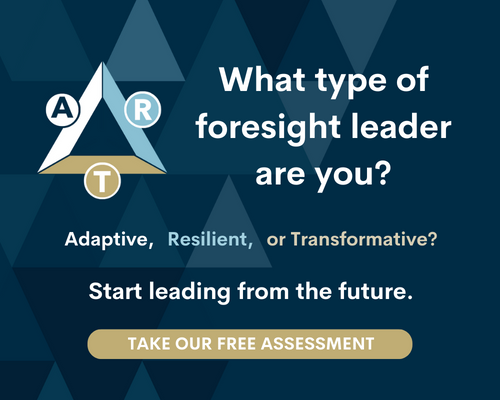Escaping The Flat-Earth Apocalypse

Have you heard about the flat-earth theory, the idea that the earth is not a sphere but is instead a flat disk that is surrounded by an ice wall and covered by a dome that stops us from falling off into space?
If you haven’t heard of this growing movement of truth-seekers and conspiracy exposers, then you’ve probably been living, well… under the earth?
The organizers of the Flat Earth International Conference recently announced on their website that they are planning an expedition to the “edge of the earth” to prove once-and-for-all that the earth is not a planetary globe, but is instead a giant snow-globe.
Whether you see this ideology as just another attention-grabbing stunt in the age of YouTube influencers or as a tell-tale sign of an antiquated educational system, one thing is for sure: conspiracy theories are on the rise. From anti-vaxxers to meatless imposters, large pockets of the world are becoming more suspicious and less well-informed. In many ways, the idea of a flat-earth is not only another symptom of our present conspiracy sickness; flat-earth ideology is the perfect manifestation of an outdated and broken mindset that has driven everything from government to business, and civic engagement to personal development for at least the last 200 years.
In his 2005 book The World Is Flat: A Brief History of the 21st Century, Pulitzer Prize winner Thomas Friedman noted that the world had become a much more level playing field, and that every global competitor could now have an equal opportunity to excel in terms of commerce. Friedman also argued that a shift in perspective would be required for countries, companies, and individuals if they were going to remain competitive in a world where historical and geographic boundaries were becoming irrelevant. In his opinion, this flat world was caused by the convergence of personal computing and technological connectivity that granted access to a global workforce. Friedman named this new era Globalization 3.0, differentiating it from Globalization 1.0 in which countries and governments were the main protagonists, and Globalization 2.0 in which multinational companies led the way in driving global integration. (Little did he know at the time that the convergence of Artificial Intelligence, Blockchain and pervasive robotics would launch what many now call the Fourth Industrial Revolution, an era marked by the disruption of the very components that characterized his Globalization 3.0.)
The book was met with thunderous applause, winning the Financial Times and Goldman Sachs Business Book of the Year when it was first published. Nonetheless, not everyone was buying into its premise. Several prominent economists retorted that “the world is spiky” or that “the world is round,” acknowledging that instead of flattening opportunity, globalization was actually making certain populations richer while simultaneously impoverishing those on the fringes of society. These naysayers argued that the social and economic “have-nots” would grow in numbers due to this “flattening,” but even they must have been shocked to see how quickly that would happen. Certainly, the exponential development of technology does contain many of the seeds that could blossom into untapped global opportunity — technology is largely neutral, agnostic and amoral — but the uneven and unsolicited manner in which it has been distributed betrays the entrenched and archaic system that seeks to leverage it. (To be fair, Friedman’s latest book entitled Thank You For Being Late does recognize that exponential technology, globalization and climate change are negatively disrupting society in a myriad of ways, and calls for unorthodox actions as a means to create adaptive and transformative responses on a global scale.)
Now, lest you think that I’m aiming to directly equate the potential “flattening” of global opportunity with the rise of populist-fueled distrust that has given life to conspiracies such as the flat earth theory, let me get straight to the point: it isn’t exponential technology and social shifts that have disrupted a move toward personal and collective empowerment on a global scale. It isn’t the fault of Artificial Intelligence, Blockchain nor robotics. And contrary to the fear-mongers, the global gap in opportunity and subsequent distrust in science, knowledge and expertise isn’t due to immigration and social integration of the “other.” Rather, this backlash against Friedman’s global perspective shift — an idea that definitely seemed to be well on its way to being embraced across the world — is due to what I’ll call “flat thinking.”
Despite the radical shifts taking place in almost every conceivable domain, flat thinking still dominates our business models, economics and governmental philosophies. It can be seen in short-term forecasting and policies, quarterly reporting, maximizing shareholder value and The New York Stock Exchange; it can be seen in the snail-like movement in government to respond to the climate crisis or to adopt policies that promote renewable energy sources. It can be seen in the mechanical mindsets of corporations that fail to see the benefit of human-centric approaches over unfettered financial gain for CEOs. And it can be seen in the lack of foresight to update the way in which we educate our children from the ground up, preparing them to live in a world that is very different from the one in which their parents and grandparents were raised. We desperately want to cling to these outdated systems that reinforce linear, siloed and simplistic models of reality because we are used to these dominant systems making the world seem like a “flat” place for those of us who are socially, culturally and economically poised to benefit from them. Insistent that the “normal bus” will return to transport us all to this flattened world, they preach the gospel of an antiquated system. “If these models gave birth to the Industrial Revolution, grew a 20th Century middle class and promoted liberal democracy, then surely they can still help us to realize a flat world for all. We just need everyone to remain committed to this way of thinking and acting.”
If this sounds right to you, I have some proverbial ocean-front property to sell for a cheap price somewhere in the middle of the Mojave Desert.
These obsolete systems have only exacerbated the problems of a shrinking middle class, disenfranchised cultures and climate chaos. And don’t be fooled — it’s these same systems that have raced toward automation to maximize profits and experimented with predictive analytics to increase consumption. They want you to blame change (the only constant in the world) instead of the legacy systems from a previous age. Rather than preparing the masses for the changes taking place, they have attempted to harness those changes for the benefit of the old, broken system. The result of this unrelenting scourge of flat thinking in government, business and society? Instead of hearing about how the world is flat for everyone, we now have to contend with the nonsensical concept that the earth is a flat disk surrounded by a wall of ice. We can mock “flat-earthers” all we want, but it’s the linear thinking of outdated organizational and governmental models that breeds the linear thinking of these anti-learning, anti-knowing and anti-evolving ideas. As it turns out, the Flat Earth Society is an accurate metaphor for a way of thinking and acting that no longer serves humanity — but it still has a plethora of unwavering members in positions of leadership.
A famous axiom goes something like this: “The definition of insanity is doing the same thing over and over again, but expecting different results.” This truism has never been more true than it is today. The idea of a flat world — one of unencumbered opportunity created by transformative technology and the emergence of new social dynamics — is impossible to achieve while flat thinking dominates our organizations and institutions. Come to think of it, the metaphor of creating a flat world depends on a narrative of a mono-future, one in which everyone finds opportunity and wealth via the same technologies, the same social landscapes and the same linear pathways — an “official future” of sorts.
In order to build a future in which we thrive, we must transition to a new way of thinking and operating that embodies adaptation, resilience, decentralization, trans- and post-disciplinarity, pluriculturalism and complexity as the new normal. We don’t need a flat world. What we need is an open world.
- An open world doesn’t need to be flat because it recognizes that diversity is the key to creative futures.
- An open world doesn’t need to be evenly distributed because it recognizes that different futures within the same world can be a benefit rather than a detriment.
- An open world doesn’t need one perspective because it recognizes that centralized information doesn’t produce evolutionary thinking and human development.
We can try to fight false narratives with all of the education and knowledge in the world. However, if we really want to see conspiracy theories such as the flat earth relegated to the trash heap of history, then you and I must stop promoting a “flat worldview.” And, whether by being culturally-programmed or purposefully indoctrinated, we’re all a little more guilty than we would like to admit. Rather than the “perspective shift” that Friedman proposed, we need nothing less than a “paradigm shift.” If we can work toward such a mindset, then we can optimistically hope to democratize the future.

Frank Spencer
Co-Founder
Creative Director
In 2009, Frank founded Kedge – a global foresight, innovation, and strategic design firm which pioneered TFSX. Throughout his career, Frank has worked as a leadership coach and developer with entrepreneurs, social communities, networking initiatives, and SMEs, helping them in areas such as development, innovation, and networking.
Read More
